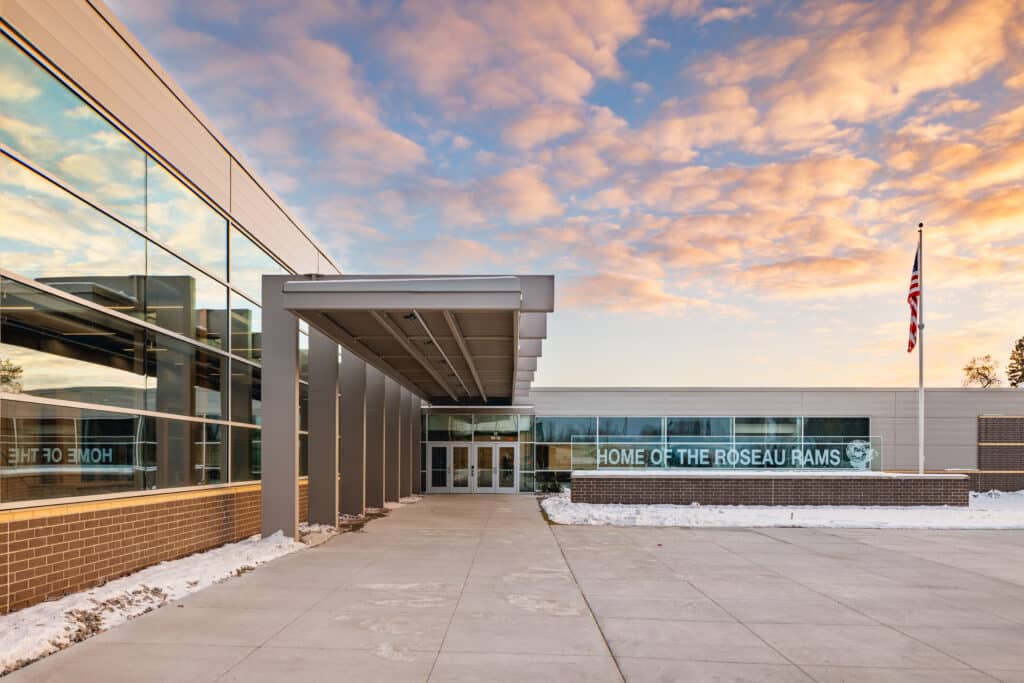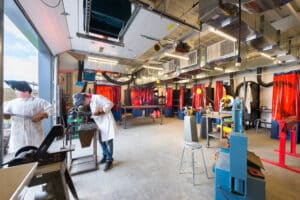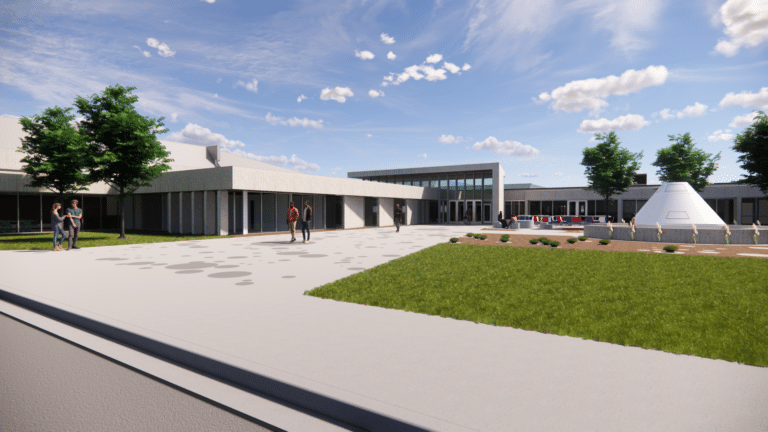Educating the next generation has always been complex, requiring ever-evolving problem-solving that aligns with ever-evolving interests and priorities. While districts face a lack of funding, challenges getting referendum votes to pass, and juggling far too many asks, progressive education goals can veer further off track.
In our role as K12 architects, we know that facility solutions are not just dependent on monetary investment, they also weigh heavily on emotional investment. Today, educational evolution is all about defining what matters to the collective community, understanding the root of the problems, and finding new ways to communicate the lasting value of future-ready solutions.
Why Value Matters
While your school could try to communicate all its critical issues to your community, there will be specific issues that will resonate with your stakeholders more than others. This is where it’s critical to align values and emotional pitches to secure optimal solutions. Roughly 90% of human decisions are based on emotions. Consider the process of buying a new car; you might look at different models, probably test drive a few, and compare costs. In the end, you will probably make the decision that feels right to you.
Emotional decisions fall into two categories: anticipated and immediate.
While anticipated decisions tend to relate to how a person expects they will feel over gains or losses that will be incurred at a future point, immediate decisions are those happening directly with consequences now. Districts face both scenarios every day. For example, considering the value of student and staff safety on snow days, deciding whether school should be delayed or proceed affects the district, parents, and students immediately. For example, a decision to add more parking to a school could be driven by letters to the editor about how hard it was to find a parking stall at last Friday night’s football game. This is an example of a decision by leadership being driven by immediate emotional feedback from the community. Whereas, the decision to expand the CTE curriculum and related facilities may have no immediate impact on the community, but a parent’s immediate emotions may be based on their anticipation of the value that such a CTE decision made now may have on their child’s ability to find work in 10 years into the future.
Much of what our team, the district, and community leaders do in our planning processes is to look at anticipated value — determining how today’s planning will affect the future of education in the district. This is why it is important to take the pulse of your community when considering long-term changes in the district. How your community members perceive the long-term impact to them will define how they perceive the value of your planning.
Find the Why: What does your community value?
When we’re trying to decipher what your community values, we start by finding the Why. This begins with strategic listening, 1:1 conversation with key stakeholders, first limited to the school board, teachers, and principals. Listening and understanding are everything at this initial stage, it is best to put a hold on large-group discussion until we discover the values that are driving the Why of your strategic stakeholders.
These discovery discussions seek to not only find out what key stakeholders want, but as importantly, what they don’t want. We also find out what stakeholders need to trust they are getting what they believe is the best value for their dollar. We need to find a plan that has the right “feel.” Once we’ve gathered feedback and defined the Why, a simple emotional value message is proven in different ways. When you bring the value message to larger groups of the community, their feedback will validate and refine the initial value proposition that originated with your stakeholders.
To pass a referendum vote, strategic communications and timing are key, including consistent, repetitious messaging delivered by trusted resources at the right time. Here is where your key stakeholders become advocates for the value proposition that is before your community.
Overlapping Value & Money
When browsing district-wide improvements, people inherently want to know exactly what they’re getting for the money. Throw in practical observation and personal emotion, and we have a decision-making situation — one where we decide what value is worth it, what isn’t, or what simply failed to resonate with us on an emotional level.
The smallest of details in decision-making can determine whether value is perceived as missing the mark or hitting the sweet spot of money
and value.
Community value almost always has an associated timeline. We often work with district and community leaders to pinpoint the issues that need to be addressed both now and later. This is a critical part of the planning process, especially considering current and future enrollment. If the community is experiencing industry growth or incoming residential development, we can plan for both short-term and long-term investments within phased construction or flexible design that provides scalable educational and facility solutions for uncertain future factors. If experiencing declining enrollment coupled with a deteriorating physical plan, we can find the best value proposition for moving forward.
What Holds Value?
Taking the time to explore what your community and district stakeholders truly value is your most effective pathway to secure emotional and monetary investment. An architect who can help analyze, interpret, and articulate those values will make it possible for all stakeholders to envision the depth of both short- and long-term impact. Solutions that resonate and demonstrate an improved quality of life for students, staff, and community will help your school district gain the support that gets votes passed and keeps education moving forward. Investing in understanding stakeholder values transforms shared priorities into actionable outcomes that drive student success, industry partnerships, and community growth.
Passing a facility referendum is very difficult, but by giving your community time and attention, a path forward will ultimately become clear. As you consider how best to meet the educational facility needs, consider how to increase value for your community. When your district needs are resolved while providing value your community wants, trust grows.




